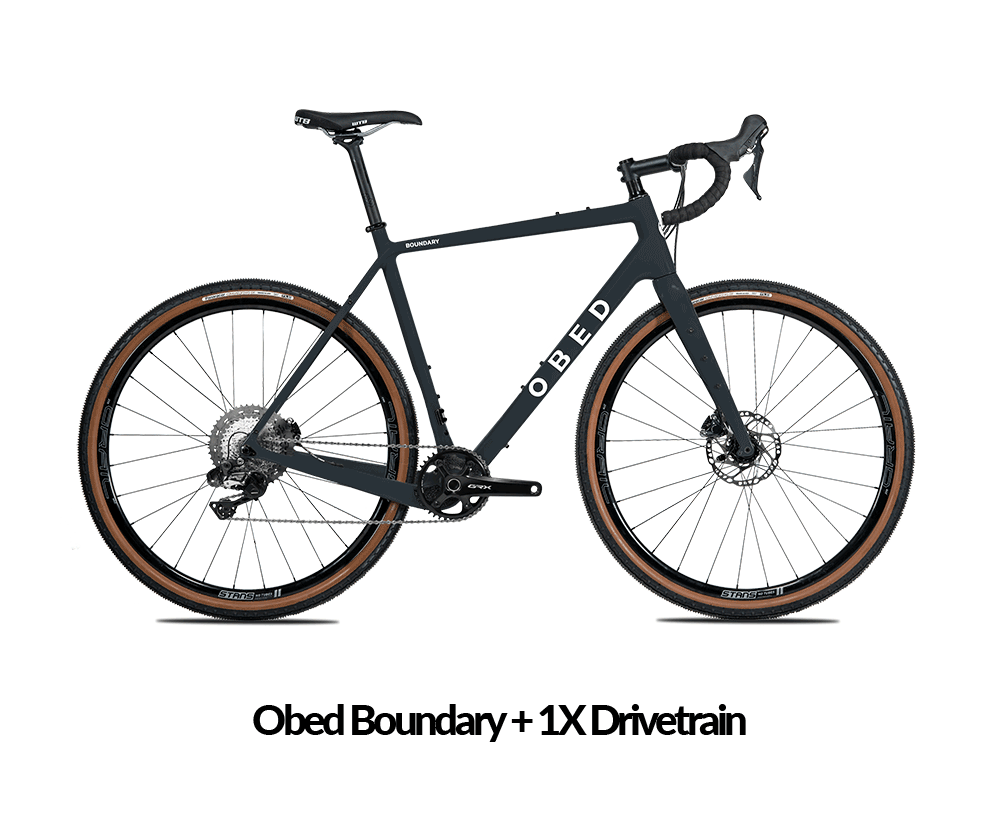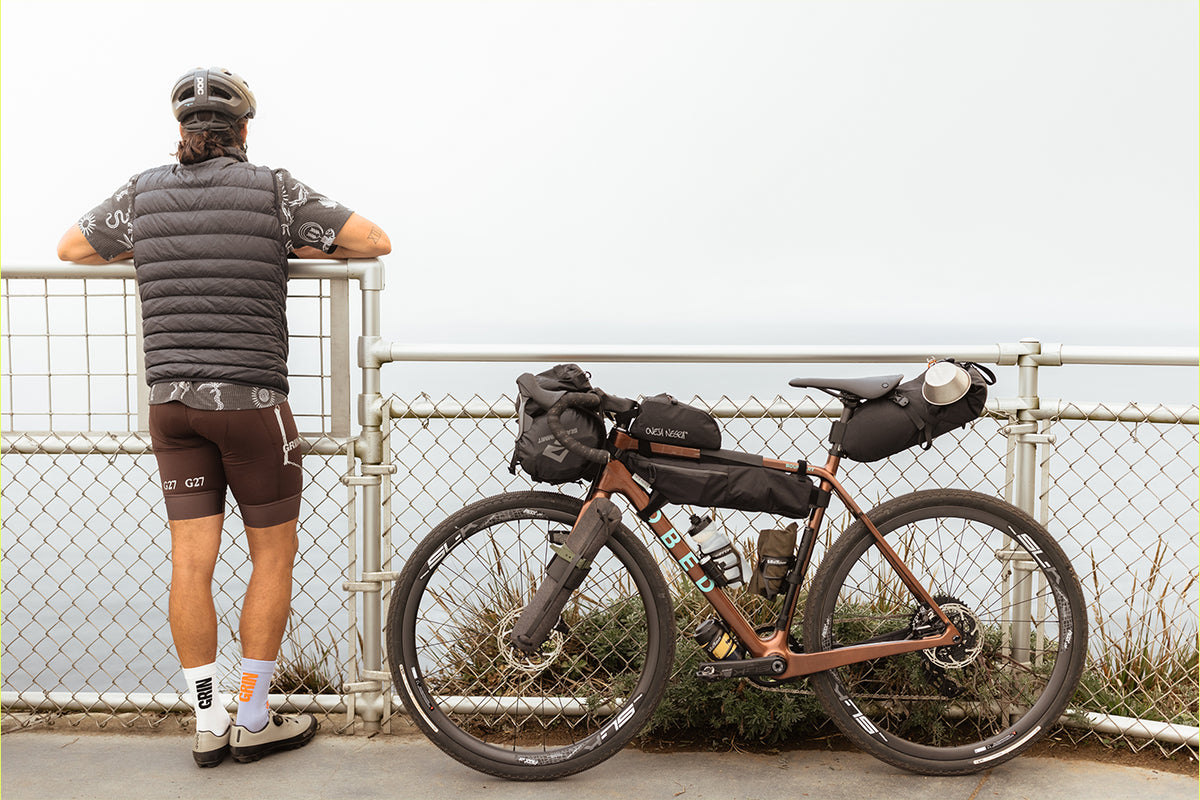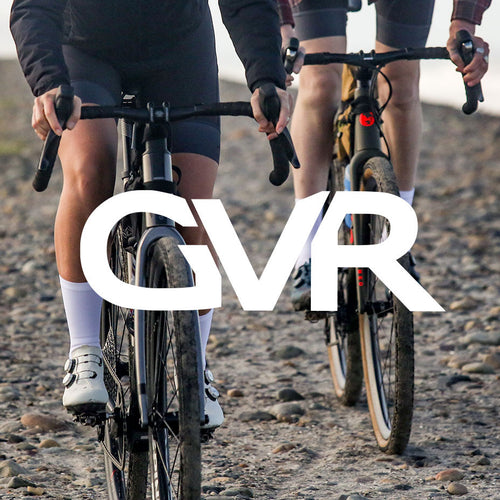Your Cart is Empty
1X or 2X?

What is best for you, 1x or 2x gearing?

It’s probably one of the biggest questions when building your OBED gravel bike: What’s the difference between a 1X (often called one-by) or 2X (two-by) drivetrain? And ultimately, which should I choose?
For many, the first question is: what is 1X and 2X?
1X or 2X refers to the number of chainrings the drivetrains run; a 1X has a single front chainring, while 2X has two (along with a front derailleur). When gravel cycling became a cycling segment in its own right, it brought together two separate considerations: a drop bar road-style bike, ridden on both the road, as well as trails. And those trails can vary from groomed fireroad to, for some, steep, rocky singletrack.
That brought forth the option of two different types of drivetrains; a 2X groups for those accustomed to road-style gear ranges with easy cadence transition between gears across the gear range, and 1X mountain bike-style gearing, with big gear jumps, a wide gear range to get up steep climbs at low speed, all in a lightweight package.
Both 1X and 2X drivetrains have a performance feature bumpy terrain with clutched rear derailleurs offerings from Shimano and SRAM (which takes the bounce out of the rear derailleur’s lower jockey and reduces chain slap and the chance of dropped chains on even the bumpiest trails). You’ll find clutched rear derailleurs only in Shimano’s GRX range, and SRAM’s AXS range. Be sure to consider this feature when choosing your drivetrain, because it’s definitely a feature.
Hmm. OK. So basically, OBED gravel bikes can be built to run either road-style 2X gearing, or mountain bike-like 1X gearing.
So…which drivetrain should you choose? It may depend upon how you ride, and often, where you ride. We look at different case use situations, which will hopefully help you determine the best choice for you.

Choose 2x if...
You ride your gravel bike a lot like a road bike. Enjoy having smooth transitions between shifts with slight cadence changes, and smaller steps between those gears will have you happy as you ride over rollers, up big climbs and down steep road or gravel descents. Those that may find themselves more on pavement and riding in hillier terrain may prefer 2X for the more road-like shifting experience.
You ride (and race) flatter terrain. Live in states like Iowa or Florida, where freeway overpasses are your Cat 1 climbs? Prefer racing on fireroads in the high Rockies at SBT GRVL or Unbound Gravel in Emporia, Kansas? Those minimized jumps between gears on flat to rolling terrain will be much less jarring on a 2X drivetrain, keeping your power much steadier as the terrain rolls along.
You want to be able to climb (and descend) everything. Generally speaking, a 2X drivetrain will have capacity for a wider gear range. That is, it’s climbing gears will make for easier climbing, and its descending gears will make for less of a “spun out” experience on a steep, fast descent. With less gears, 1X tends to sacrifices a bit of end-range gears capability.
Choose 1x if...
You ride your gravel bike a lot like a mountain bike. Many of today’s modern mountain bikes are running 1X. That means those MTB’ers used to riding chunky, rocky singletrack on their mountain bikes are taking their new Boundary out on the same trails. Familiarity with gearing changes of 1X for mountain bikers—that is, an ambivalence about larger cadence changes when moving between gears) makes it a seamless transfer for you.
Weight savings is a premium for you. Want to build a climbing machine as light as you can? A 1X drivetrain—with just one front chainring and no front derailleur—will save you well over 200 grams; not a game-changer, but hey, some of us just wanna cut weight on a bike; a 1X drivetrain is a simple place to start.
Simplicity reigns. Without a front derailleur, a 1X front ring has deeper teeth, keeping that chain on over the biggest bumps on the trail. And with that front derailleur being absent, that’s also one less piece of equipment to require adjustment or wear out.
You’re new to gravel riding. With just shifting of the rear derailleur to worry about, shifting a 1X drivetrain is easier for beginners to understand and operate.
You ride in inclement weather. Again, less mechanical pieces means less things to foul up, particularly when the mud turns into peanut butter.
Still unsure? Our OBED in-house team is ready to LiveChat about gear choices when looking at how to build your Boundary or GVR. Just visit the website, click the pop-up box, and ask our team of experts (many of whom are out sharing the same trails with you) what they think might be your best bet.
Shop Gravel Bikes
Read More Obed Stories
Also in Stories

Transcordilleras: Cycling through Colombia's Andes
OBED athlete Austin Sullivan embarked on the formidable Transcordilleras journey in Colombia's Andes. Spanning 620 miles over 8 days, this challenging adventure wove through breathtaking landscapes, fostering connections and unforgettable experiences along the way.

Prepping for Unbound XL with Austin Sullivan
So, you're gearing up for the XL, huh? Recently, I've had a couple of friends reach out about equipment and how to best prepare. I've responded to them individually, but I thought it would be more convenient to condense my advice into a single post. This isn't a completely comprehensive list, but it covers some key highlights to consider, even if you're starting at the Unbound start line for one of the shorter distances. Let's dive in.

From Sea to Sky: A Bikepacking Tale
The area above San Francisco has always been a place that keeps drawing OBED ambassador, Mike Pham, back. When it came to choosing his next bike-packing adventure the destination was a no-brainer...

